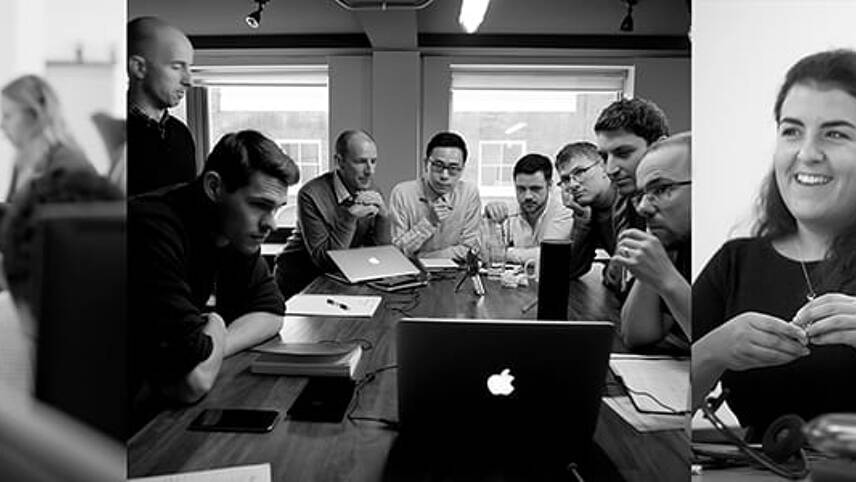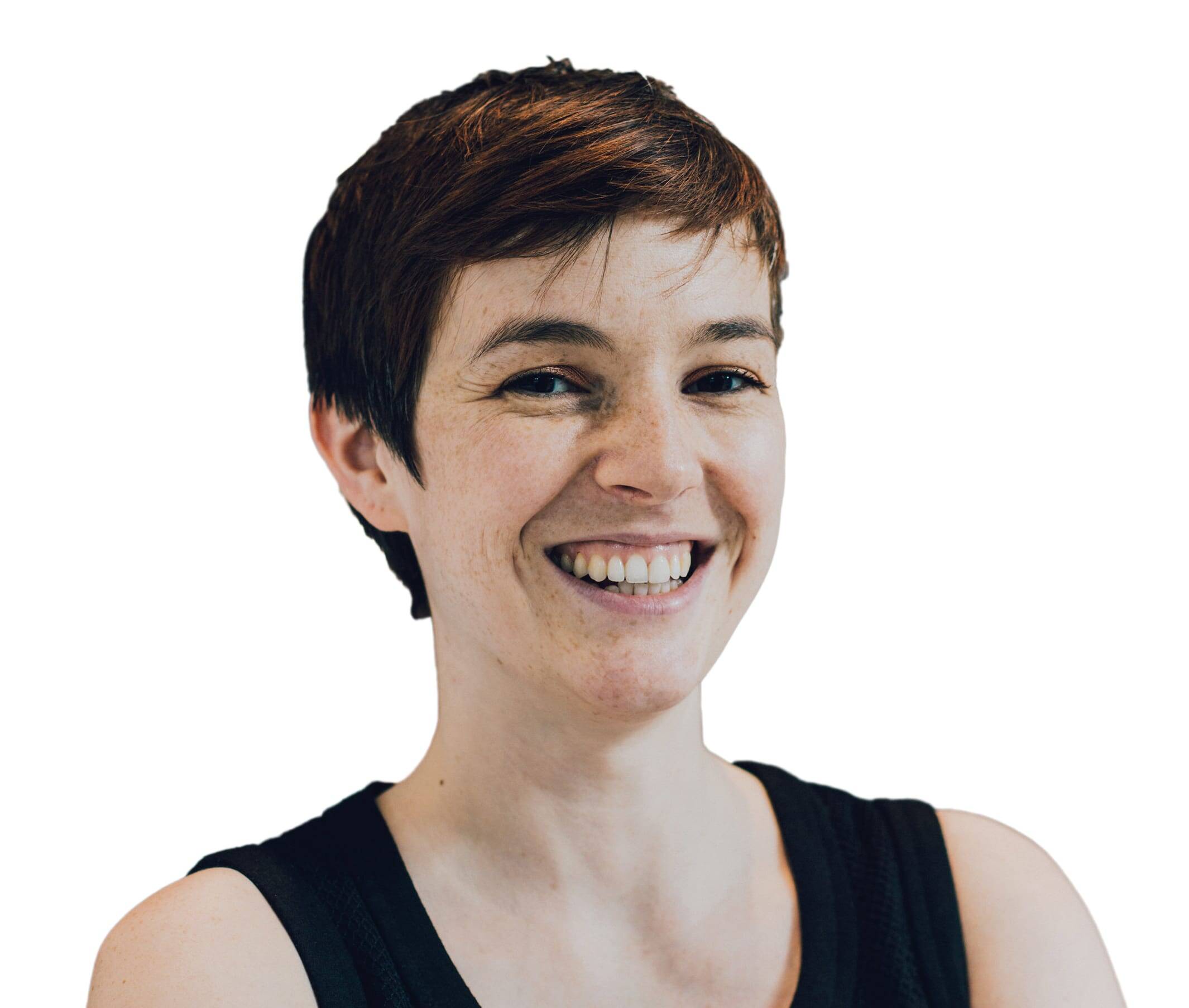This is the Sponsored paywall logged out

In the final case study in our customer engagement series, Denise Chevin talks to Octopus’s Rebecca Dibb-Simkin about its personalised service, scaling up – and why emojis are so important.
 It’s everyone’s job to do customer engagement,” says Rebecca Dibb-Simkin, marketing and product director at Octopus Energy. “For example, every customer gets the email address of our chief executive Greg Jackson when they sign up with us. He replies to every email he gets, which is between 40 and 50 a day.”
It’s everyone’s job to do customer engagement,” says Rebecca Dibb-Simkin, marketing and product director at Octopus Energy. “For example, every customer gets the email address of our chief executive Greg Jackson when they sign up with us. He replies to every email he gets, which is between 40 and 50 a day.”
“Greg acts as a really good first port of call for anything that’s wrong in the business. So, for example, he might say, ‘That’s a bit strange, I’m getting lots of questions about that’, and we’d look into it and see if it’s a bug we need to fix.”
Customer engagement seems to be going well at Octopus: it wins plaudits for its customer service and is the only energy retailer recommended by Which? for the second year in a row. And although the company has grown rapidly, its chief executive is no busier with direct customer emails.
“When I joined the business two and a half years ago, the CEO was getting about 40 emails a day from our 50,000 customers, and now we’re at 1.3 million, he still gets about the same amount of emails,” says Dibb-Simkin.
In August Octopus took over Co-op Energy and its 300,000 customers to propel it over the one million mark.
At the heart of Octopus’s success is proprietary technology that allows the company to respond to new trends and customers’ changing demands. Software developers sit close to customer teams and any iterations are discussed from a customer perspective. All 250 ‘energy specialists’ – staff in the company whose job is primarily to deal with customers – are trained to deal with all aspects of customers’ accounts and interactions, which results in a 95 per cent ‘first fix’ rate.
“We consider ourselves to be a tech business that does energy, and we have our own platform and CRM and billing system that we built ourselves,” says Dibb-Simkin. “We’re constantly improving it as we learn more and more things that we can build into it. So as we get bigger and win more customers, we get more efficient.
“We also have a policy where our developers will go and sit with our customer service staff and listen to them talking to customers in order to see if there’s anything developers can do to make their lives easier.”
Another aspect of the winning formula, according to Dibb-Simkin, is that customers are looked after by a small team of energy specialists who all sit near each other, which means that a customer will always be looked after by the same six to eight people. This gives personalisation and accountability, which is not possible when phoning a large and anonymous call centre.
The energy specialists – who make up two-thirds of Octopus’s total staff – are spread across offices in London, Leicester, Brighton and the headquarters of the newly acquired Co-op Energy in Warwick.
Perhaps reflecting the company’s roots as a challenger brand, the majority of customer contact is digital (before taking into account the Co-op Energy customers), which is higher than you might find in the traditional energy suppliers.
“About 80 per cent of people email us, or Facebook message or Tweet us, and we answer digital communication from 8am to 10pm, seven days a week,” she says. “Sometimes out of those hours we have a remote working team of about 40 people who do out-of-hours digital customer service, and one of them works overnight, so you can get emails from us at 2am.”
But that doesn’t mean customers don’t have a phone option, she says. “Our opening hours on the phone are more limited, because more people email us, so we’re open 9am to 5pm, Monday to Friday, by phone.
“We aim to answer the phone within 90 seconds, and that’s speaking to a human who will resolve your problem, and we aim to get back to you within a few hours by email, so you’ll get stuff resolved the same day. We’ve found that people do like to email us, because you can fire off an email when it suits you and know that you’ll get the answer that day,” she says. “We don’t measure average call handling times – our team are not told to keep phone calls quick.”
The same account teams also deal with any messages via social media.
“Any customer service messages we get through social media are automatically filtered into the correct teams. So if you’re a customer looked after by team A – not that you would know that – if you call or email or Facebook message us, we will automatically recognise who you are, and give that to team A to answer, so it’s all integrated.”
Dibb-Simkin explains that customers can also self-serve when amending their own direct debit online, provide meter readings or inform the supplier they’re moving house. All interactions, by whatever means, are logged, so there’s a record of all customer contact.
“There were always questions about whether we could scale this model. But by being very true to our tech roots, and continuing to improve our platform and our CRM systems all the time, we’ve shown that we can scale it.”
She continues: “As we keep growing, we need to continue to get better. That’s the biggest challenge, continuing to put pressure on yourself to keep making things better as you scale.”
Chief executive Greg Jackson has recently talked about the challenges of integrating the customers it took over from Co-op Energy in August. Speaking at Utility Week Congress in Birmingham in October, Jackson said that a survey of the Co-op customers – who are being migrated to Octopus CRM – indicated that “44 per cent said they will definitely stay… so we have to work hard to retain the rest”.
Dibbs-Simkin appreciates the challenge: “We’ve now got 1.3 million customers, we’re the only Which? recommended energy supplier for the second year in a row and our customer happiness index is still above 70 per cent. But we all know it’s not about resting on your laurels.”
Q&A: Rebecca Dibb-Simkin, Octopus
 There’s a lot of pressure on energy retail pricing – how does that sit with customer service?
There’s a lot of pressure on energy retail pricing – how does that sit with customer service?
We pride ourselves on being a fairly priced energy company. We don’t always promise to be the cheapest, because often the cheapest are either unsustainably cheap, which is why we’ve seen so many smaller suppliers go pop, or you get this ‘tease and squeeze pricing’, where low prices for new customers are subsidised by that hike in prices later on, which is something we’ve railed against.
So we always promise to be one of the cheapest, and we deliver that by our incredible operational efficiency. Our cost to serve is lower than many of our competitors, so we can keep our prices down.
Are there any channels that you don’t engage with customers through?
Not at all. Sometimes we have people turn up at our offices, people find us on Google and come and knock on the door, and we’ll go and chat with them quite happily. People write letters to us. We don’t get many but probably a few hundred a year, and that’s absolutely fine. I don’t think we’ve got a fax machine, so you can’t fax us, but that’s the only channel we don’t have.
We have all the social media channels. Facebook and Twitter are the big ones. We have an Instagram account, but I don’t think we’ve had any customer service queries through it. We won’t discuss an account on the Facebook page.
What does success look like?
We have a measurement tool called the Customer Happiness Index. It’s a proprietary measure. I suppose it’s our version of Net Promoter Score. After every interaction a customer has with us, we send them an email asking them to give us a happy face, an indifferent face or a sad face.
If they give us a sad face, a little box will pop up and they’re asked to share why they aren’t happy. Any sad faces or comments are sent directly to the team leader of that customer’s team, and the team leader will review those and go back to the customer that same day.
More than 70 per cent of people give us a happy face. The feedback is daily and anybody across the business can see it. We’ve got screens across every office showing the latest index. Although it’s a very simple metric, it’s a really good way of starting to understand how customers really think and feel.
Are you using AI to respond to customers?
We don’t use AI, because we like customers to be spoken to by human beings. We use data and machine learning and algorithms to understand how people might engage with us at all times, and to be able to make sure that we’re ready. Our system holds 30 billion rows of data that we use for everything from planning when our calls might come in, to the times of the month we get peak emails.
What for you is something that isn’t very successful?
The smart meter customer experience, because of the challenge there has been with that rollout. There are things that we can learn to do better, and there are things that are out of our control.
Where we built our own tech, most stuff is within our control, and we can make it better. It’s difficult when you’re working with a system that you can’t control, even though there are a lot of great people working on it.
This article is part of a series. Download our customer engagement report here
Rebecca Dibb-Simkin is speaking at Utility Week’s Customer Summit on 22 and 23 January 2020 in London. For more details: https://event.utilityweek.co.uk/customer/
Please login or Register to leave a comment.